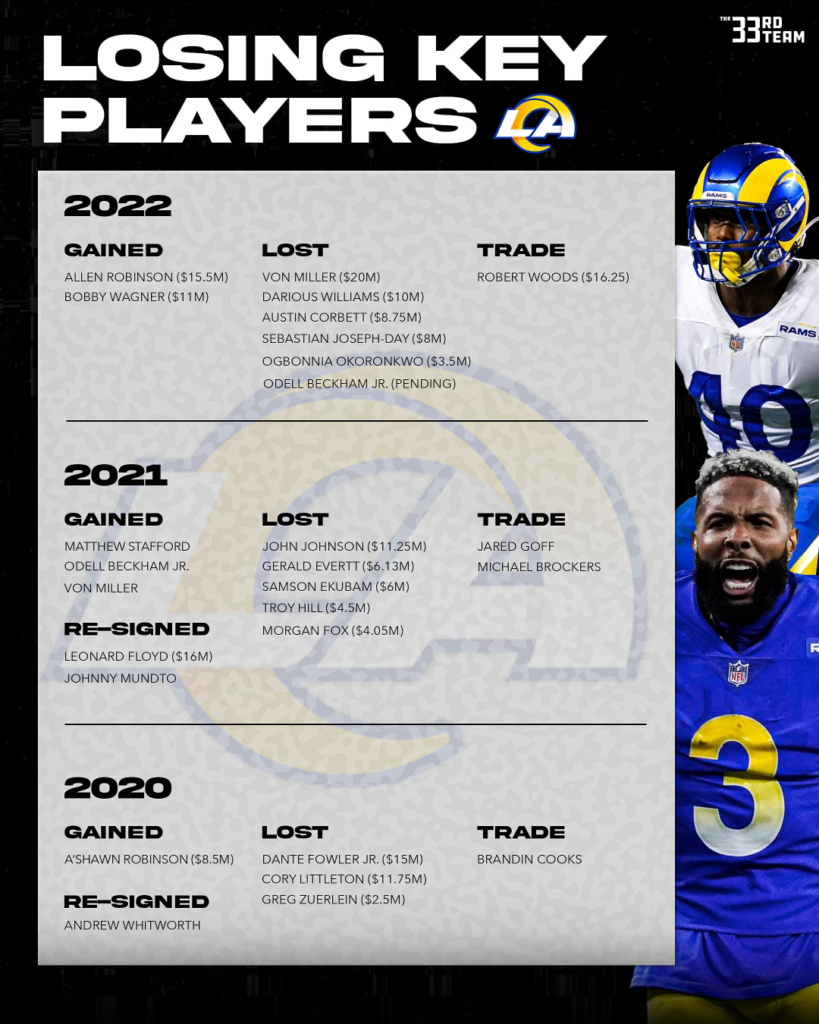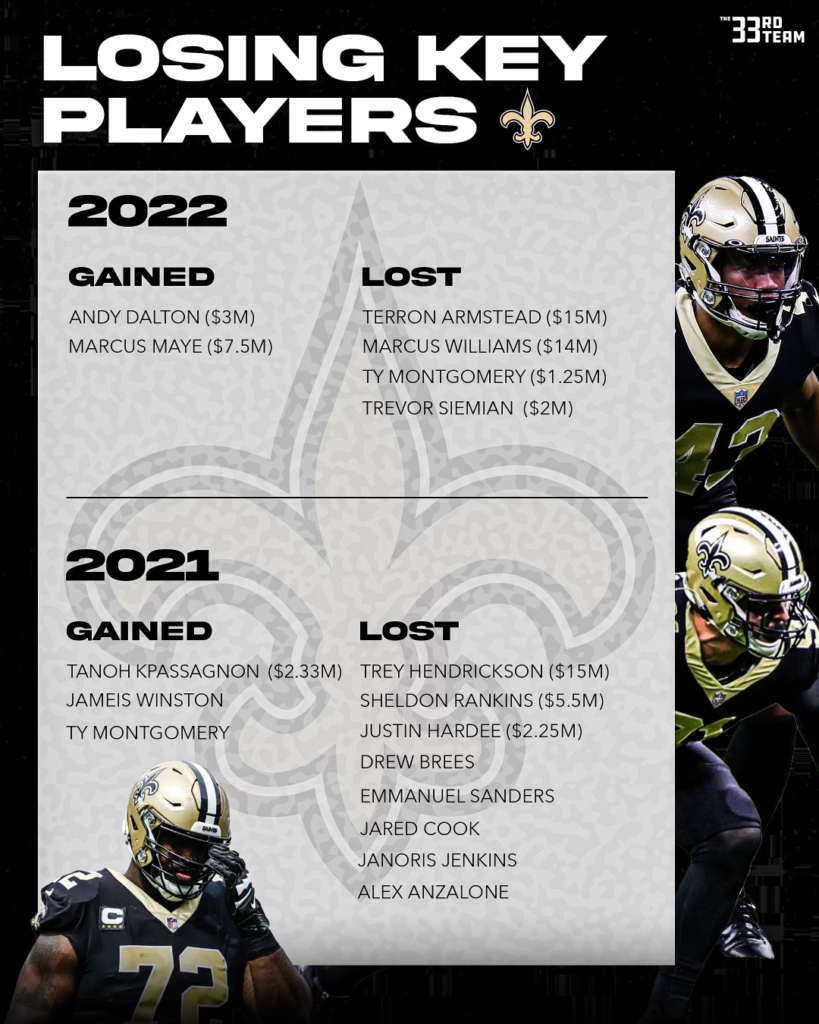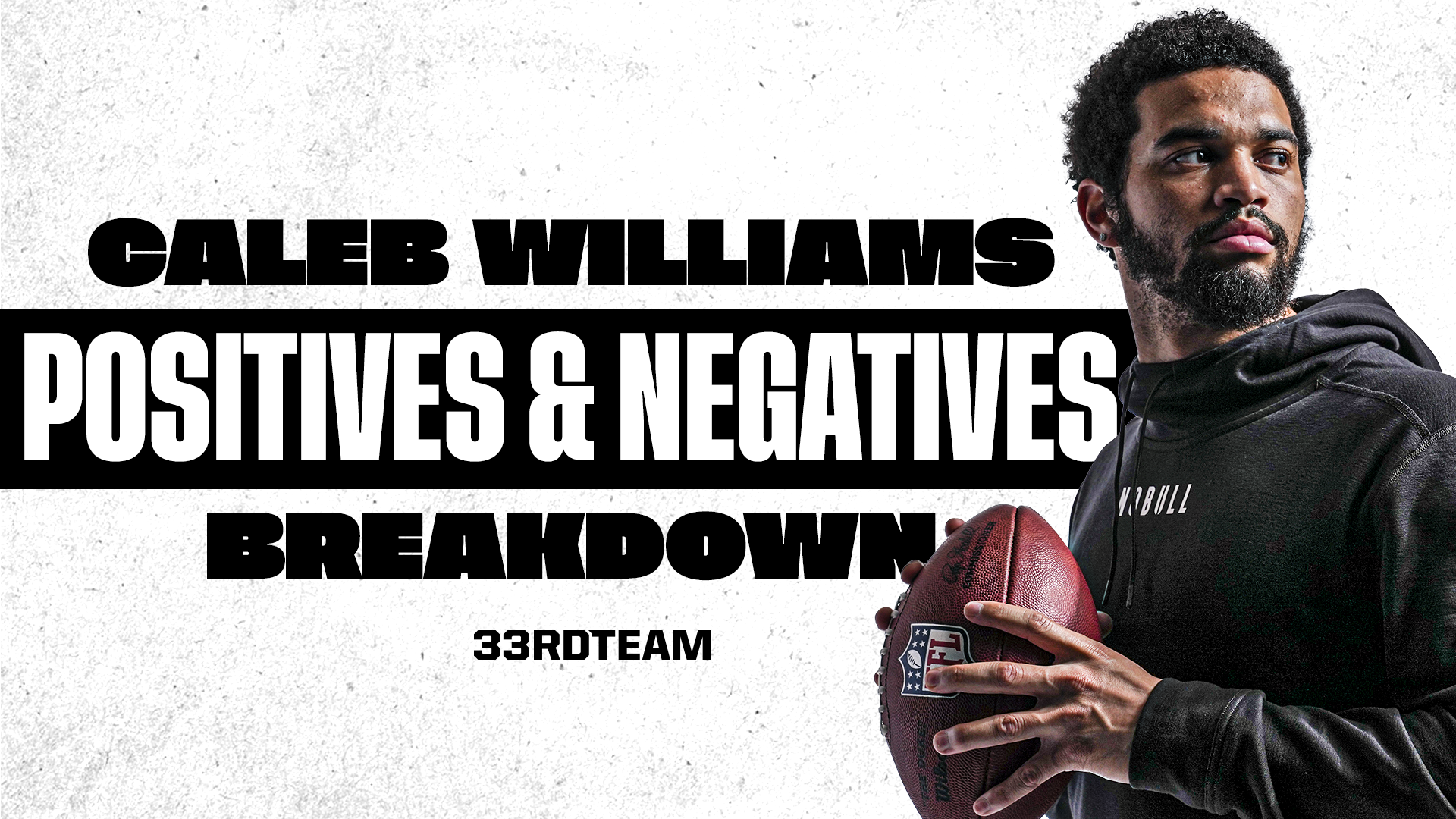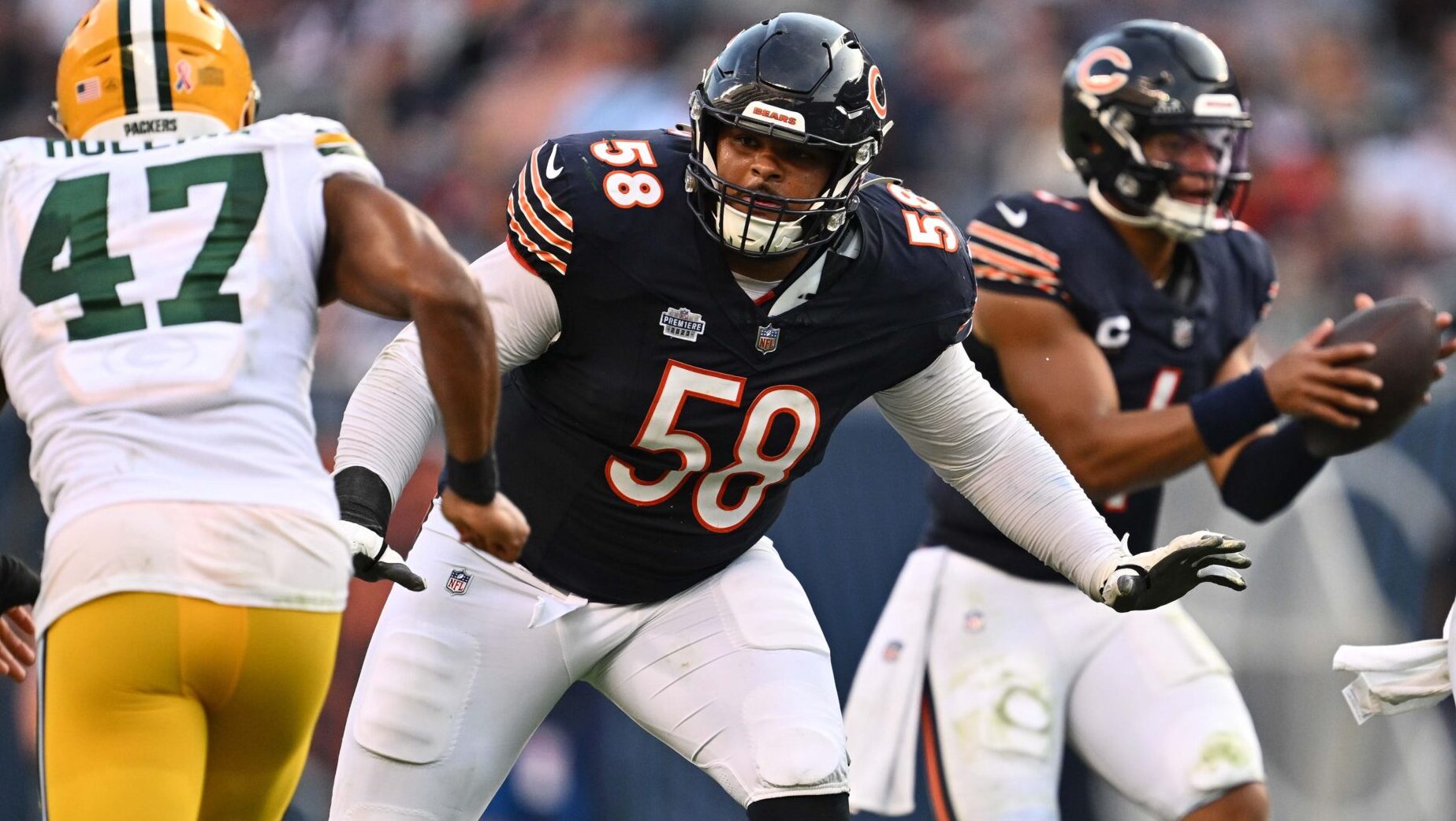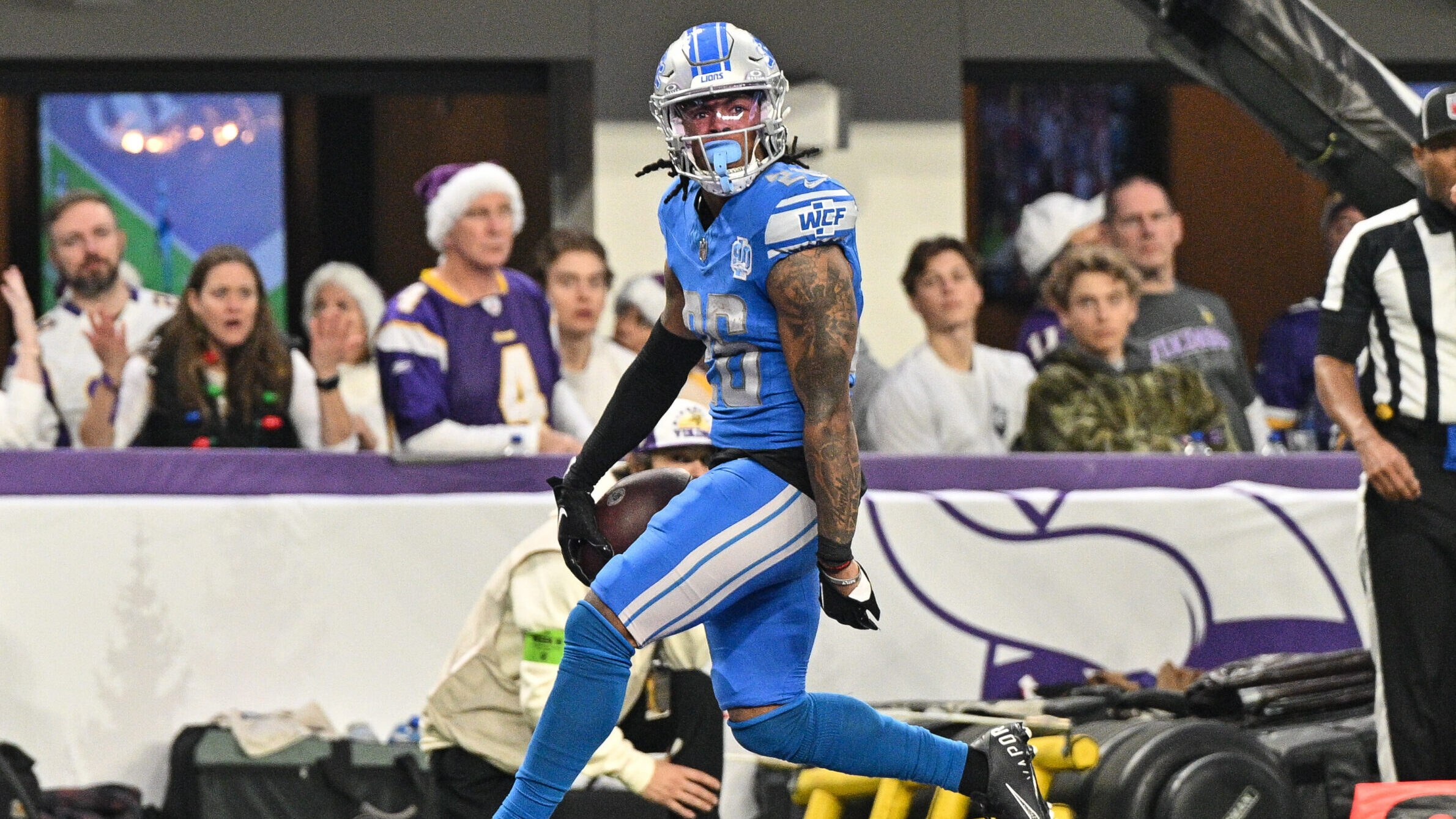Breakdowns
4/4/22
5 min read
Is The Salary Cap Real?
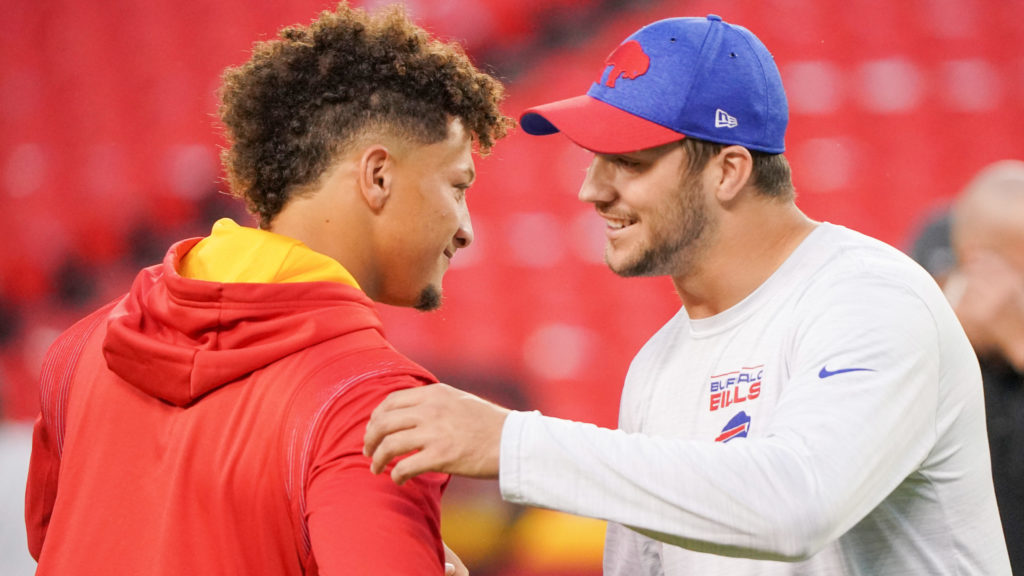
There has been much discussion about whether the NFL Salary Cap is real or not. In any given year, the truth is that almost any team can fit in almost anybody they want if the player is important enough. This is why cap skeptics (mistakenly) exist.
To understand this, you need to realize that, over time, cash will equal cap by player and by team. While there is some ability to affect the timing of charges, there is no way to avoid the charges altogether. You can restructure contracts — typically by converting base salary to a prorated signing bonus — to create short-term cap space. But those charges will be incurred later.
Two of the paradigm examples that cap skeptics reference are the Saints and the Rams. Whereas the former is typically one of the teams most over the cap prior to the start of the league year, the latter seems to be able to continuously create room for superstar players.
So, what are the teams that are $20M+ over the cap prior to the start of the league year doing? Let’s take a closer look at the Rams and the Saints...
Losing Key Players
Despite entering the offseason at a projected $22.3M over the cap, the Rams have been able to sign both Allen Robinson and Bobby Wagner. These deals have led some to question the cap’s validity. But what they fail to realize is that the Rams are able to spend this money by saving it elsewhere.
Key mid-season acquisition Von Miller signed with the Buffalo Bills. Starting CB Darious Williams departed for Jacksonville, and LA traded Robert Woods to Tennessee. This is not an aberration either — the Rams have had to make difficult decisions in losing players for many seasons now. Here’s a look at who they’ve gained versus who they’ve lost:
Like the Rams, the Saints have also lost key players due to their restructure strategy. In this offseason alone, they let their two best free agents — Terron Armstead and Marcus Williams — leave to sign with other teams. Last offseason was no different, as Trey Hendrickson helped Cincinnati reach the Super Bowl. Here’s a full breakdown of New Orleans’ recent gains and losses:
There are people that perceive the cap to be some sort of empty hole that teams can keep filing. Yet, these teams are being forced to make difficult decisions on impact players. If the cap were fake and resources were limitless, then why wouldn’t the Rams keep Von Miller? The notion that teams are just adding guys endlessly and can fit all of them is simply false.
Backloaded Contracts
It’s common in the NFL for teams to add non-guaranteed seasons with high salaries at the later years of the contract. This structure can make it look like the team owes a given player $20M, but they never even intend to have the player on the team during that season. The result is that there’s more cap space taken up than there actually is. In other words, the team seems to have less cap room than they actually do.
To understand this, let’s take a look at Tyreek Hill’s recent contract with Miami Dolphins (the graphic is from our friends at Over the Cap):
The first three years of Hill’s contract will be fully guaranteed by the third day of the 2023 league year. As such, it’s likely he plays 3 or 4 years on this contract. But when we get to the 5th year of his deal, people will look at this and think the Dolphins are in cap trouble. In reality, Miami has no intention of paying him a $43.9M P5 salary in 2026. He will either be cut or re-negotiated.
Although Hill is an extreme example, this is actually a strategy used by most teams in the NFL in some form or another.
Sacrifices
Playing devil’s advocate, the recovery from significant prorated money might only be one or two seasons with restrictive amounts of dead money; however, somewhere you’ve made some roster decision that hurts you.
It might be true that you can fix the math, but you’ve denigrated your roster before and that will take more than a year to correct. Oftentimes, this will be in the form of roster depth, which will make it difficult to overcome inevitable injuries. Even worse, if you have a major hole at any position, opposing teams are smart enough to exploit it. You can’t succeed with any glaring deficiencies in the NFL. Plus, if you have dead money, you’re either working with less cap in a given year or borrowing from the future.
Cash
Over time, there is no way to avoid every dollar you spend being charged against the cap. In any given deal and collectively, a team’s cash and cap will equal each other. In the short term, it's not hard to create extra room to keep a player. But you have to know that what you're doing is creating some increased short-term flexibility that will impact your long-term flexibility. There is no team in the NFL that can consistently spend cash over cap to a significant extent.
Now, if you want to restructure some contracts and pay the piper later, that can be maneuvered fairly easily. You just have to be fine with losing some players, along with losing some compensatory picks when you cut players who have phony fourth and fifth years. Hopefully, this demonstrates the ramifications of pushing the cap forward. The cap is very real and will bite back.

